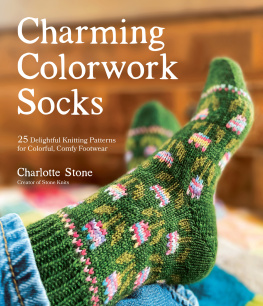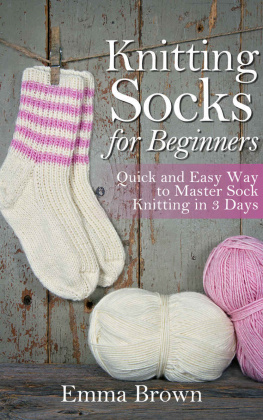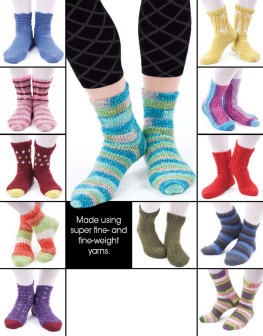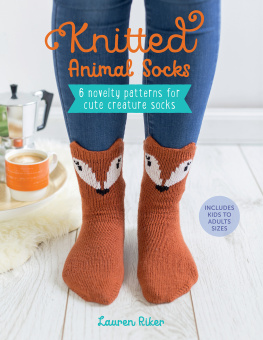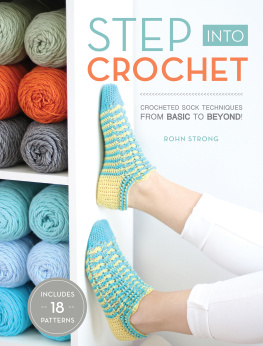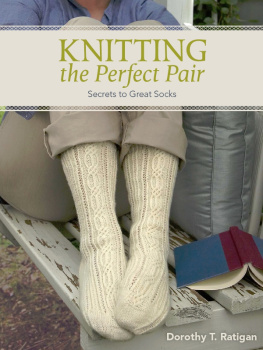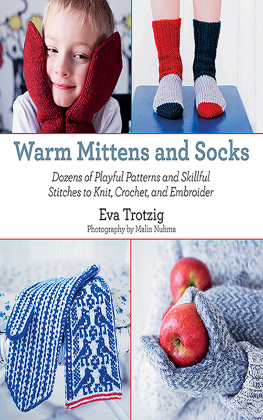Contents
Guide
Charming Colorwork Socks
Delightful Knitting Patterns for Colorful, Comfy Footwear
Charlotte Stone
Creator of Stone Knits

The author and publisher have provided this e-book to you for your personal use only. You may not make this e-book publicly available in any way. Copyright infringement is against the law. If you believe the copy of this e-book you are reading infringes on the authors copyright, please notify the publisher at: http://us.macmillanusa.com/piracy.
For Alex, Betsy, Lola and Zak
(who continuously inspire me to knit more socks)
I am very excited to welcome you to my first-ever colorwork sock collection. I have had a lot of fun letting my imagination run wild, creating 25 unique and vibrant sock designs for you to knit. Since I started releasing colorwork sock patterns in 2017, I have tried to keep very much within my Stone Knits socks style that you might already know and love. I have been inspired by the nature and culture where I live, here in the hills above Zrich in Switzerland.
I have always had cold feet, so my love of sock knitting started many years ago out of a desire to keep my toes warm. After moving from London to Switzerland with my family, I was suddenly faced with five pairs of feet to keep warm and knit for in the winter. And as I am guessing you already know, once you start wearing hand-knit socks, it is hard to go back to plain shop-bought! Cold feet, coupled with an absolute love for and obsession with knitting colorwork, led me to designing colorwork socks.
I love how, with colorwork socks, we can be so creative with the colors and motifs just by knitting with a couple of colors in one row. The number of designs and colors that can be played with in these patterns is really unlimited. You can use the yarn like you are drawing or painting, and its so fun to be wild and creative with what you are making, even with such a practical clothing item as socks! With socks, you can go totally out of your comfort zone without being too worried about whether they suit you or if they will go well with your wardrobe!
It is liberating to just choose an outlandish pair of socks for the mood you are in or for celebrating an event or time of the year! Making a Christmas sweater can be a big commitment of yarn, money and time, but I think most of us could happily knit and wear a festive pair of socks (while keeping our feet warm in the winter). Colorwork socks are also a perfect knit to gift, since they are relatively quick to make and will often use up your scrap leftovers of yarn. And seriously, who doesnt need socks!? Its like gifting a hug for the feet! With these patterns youre able to create a thoughtful and personalized pair for your loved ones; for instance, chickens for your chicken-owning friends or socks for any coffee addicts you might know. I have created a variety of different designs so that you can find a pattern for everyone!
Go grab your favorite pair of sock needles and rummage through your sock yarn to see which pair you might cast on first! No matter which pattern you choose, you are in for a knitting treat!
Best wishes and happy sock knitting.
Charlotte xx

I truly believe there is no best way for knitting colorwork. I think the best way to knit colorwork socks is with a smile on your face and an optimistic attitude. Do whatever feels best for you and brings you joy, or whatever you are happy to do for your colorwork technique. Your knitting should be fun and make you happy. You will do more of it if you enjoy the process of knitting your socks.
I am an English throwerstyle knitter (holding the yarn in my right hand), and I can knit colorwork socks quickly by picking up and putting down each strand as it is required within the pattern. It is also possible to hold both yarns with your left hand if you are a continental-style knitter. And there are many different yarn holding devices that can help prevent your yarns from twisting. As an alternative, it is totally okay to stop now and then while you are working to untwist any yarn strands so you do not get in a tangle! Another method is to hold one strand of color in one hand and the other color in the other hand. The only problem that I have found with this method is that since one of those ways of knitting feels less familiar, it often results in unequal tension for each color. But as with everything in knitting, this will improve with practice.
I really want you to make pairs of colorwork socks that will fit! Every pattern has been written with different stitch counts and size options, to try and ensure everyone is able to wear these socks.
With these colorwork sock patterns, the most important measurement is the circumference of your foot, not the length. We may have small, wide feet or long, thin feet. With all these patterns, you can increase or decrease the length of the leg or the foot to meet the requirements of the foot you are making the sock for. Each pattern will describe how to do this. You will need to measure around the largest part of the foot to get your correct circumference size. This typically would be the ball of the foot, near your toes.
You will see in each pattern there are two measurements: The first is the size foot the sock is intended to fit, and the second is the actual measurement the stitches will create.
You will want to choose from the first set of measurements for your feet. The reason there is a difference is that your sock should have about 1 inch (2.5 cm) of negative ease so they fit snugly on your foot (and do not fall down inside your shoe!).
If you are knitting these socks as a gift, you will need to know the widest circumference of the persons foot (to choose which size to knit) as well as their foot length. I have provided a table showing the standard shoe size foot-length measurements, which will help you determine how long you need to knit the foot of the sock. If you are knitting the socks for yourself, you can always try them on (be careful with your knitting needles though!) to check if they are the right length.
Standard shoe size charts for length of foot
You probably already know that gauge is important for successful knitting, but it is even more so for colorwork socks, especially when it comes to the colorwork sections. You will see that for every pattern in this book, the number of stitches for the colorwork are increased in comparison to the plain stockinette sections of the socks. This is to try and prevent the problem of inelastic floats. Those extra stitches will make up for the sock fabric not being as stretchy in colorwork as they would be if you had knitted it in one color. The patterns will always have instructions to decrease the stitches or go back down a needle size for any stockinette sections after the colorwork.

